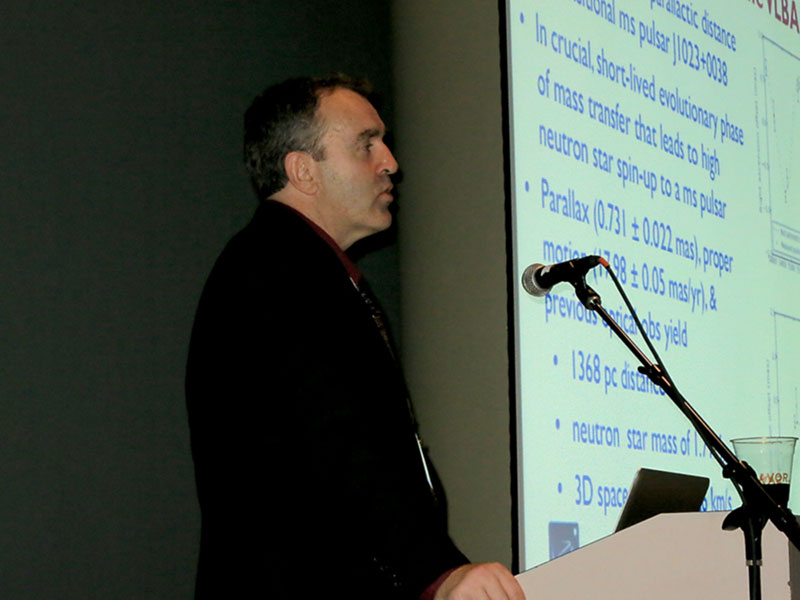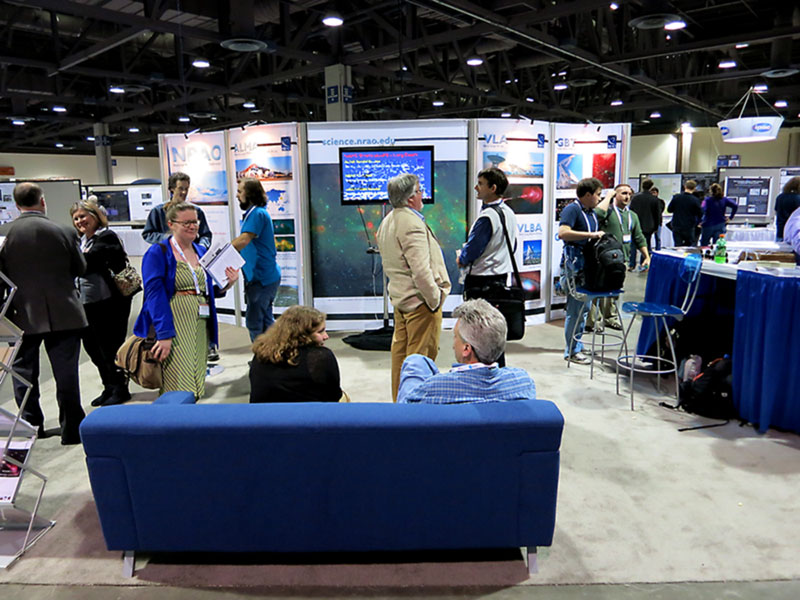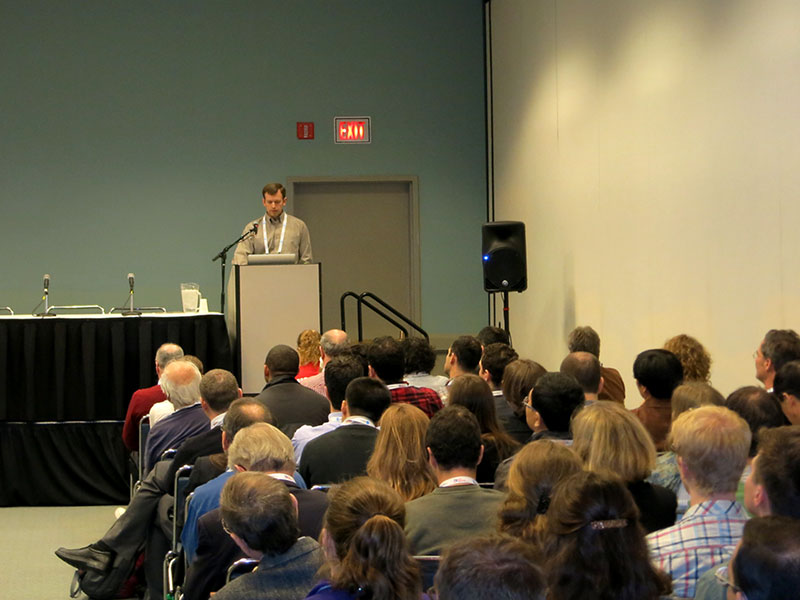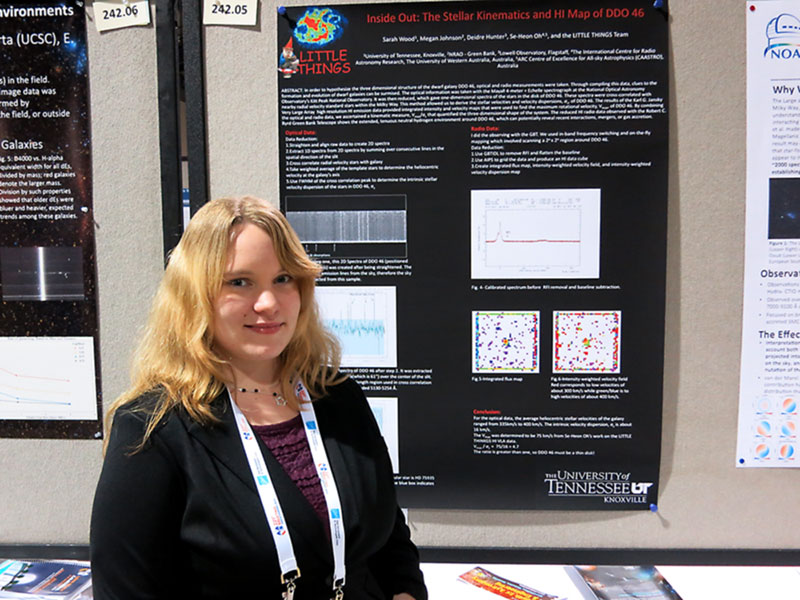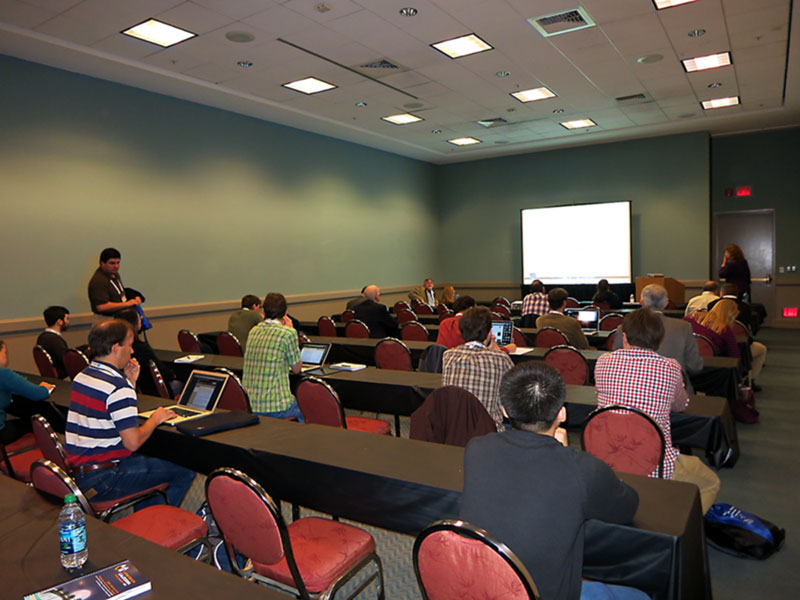NRAO eNews
Volume 6, Issue 2
February 6, 2013
NRAO eNews
Volume 6, Issue 2 • February 6, 2013
Upcoming Events
![]() ALMA Data Reduction Tutorial
ALMA Data Reduction Tutorial
Feb 28 - Mar 1, 2013 | Charlottesville, VA
![]() Science with ALMA Band 11
Science with ALMA Band 11
Mar 19 - 20, 2013 | University of Oxford, UK
![]() 3rd VLA Data Reduction Workshop
3rd VLA Data Reduction Workshop
Apr 8 - 12, 2013 | Socorro, NM
![]() Transformational Science with ALMA: From Dust to Rocks to Planets
Transformational Science with ALMA: From Dust to Rocks to Planets
Apr 8 - 12, 2013 | Kona, Hawaii
![]() Radio Astronomy in the LSST Era
Radio Astronomy in the LSST Era
May 6 - 8, 2013 | Charlottesville, VA
![]() NAIC-NRAO Single-Dish School
NAIC-NRAO Single-Dish School
Jul 10 - 17, 2013 | Arecibo Observatory, Puerto Rico
Very Long Baseline Interferometry Capability Returns to VLA
Walter Brisken
For the first time since the old Very Large Array (VLA) correlator was turned off in early 2010, it is now possible to include the phased VLA in Very Long Baseline Interferometry (VLBI) observations. A first example of such a mode made use of the VLA and 10 Very Long Baseline Array (VLBA) antennas. Both the VLBA and VLA were configured to observe with 2 full-polarization baseband channels of 128 MHz each, corresponding to the widest bandwidths the VLBA can offer. The image below was constructed from 15 minutes of test data. The upper images show the arcsecond scale jet as observed with the VLA. The inset is the milli-arcsecond scale VLBI jet observed simultaneously with the VLBI array. On 2 February 2013, the VLBA and phased VLA will begin making scientific observations of distant black holes. Some of the upcoming observations will include the orbiting Russian RadioAstron VLBI antenna.
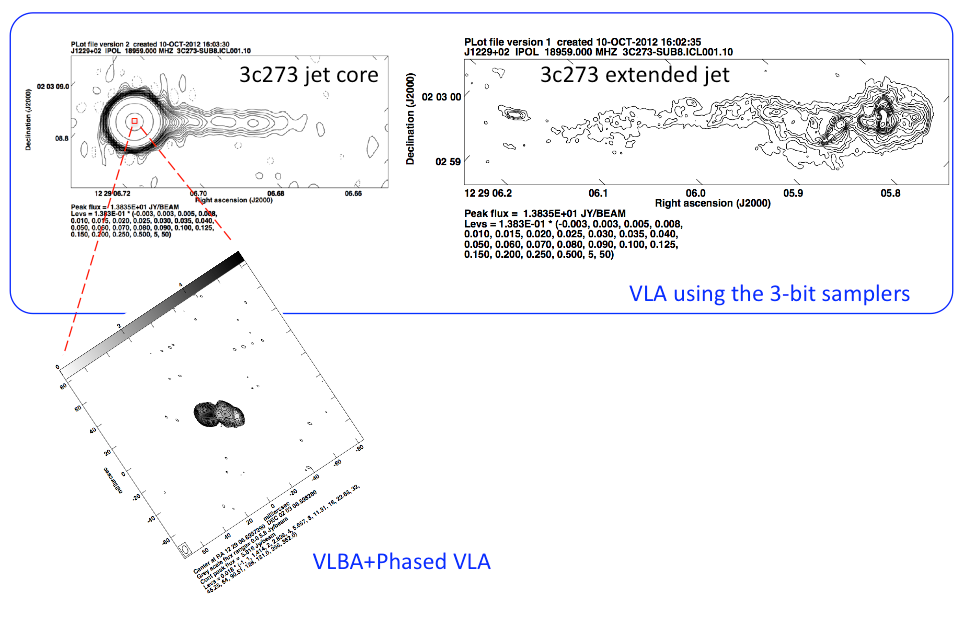
A Scalable W-band Focal Plane Array for the GBT
Kiruthika Devaraj (Stanford), for the Argus collaboration
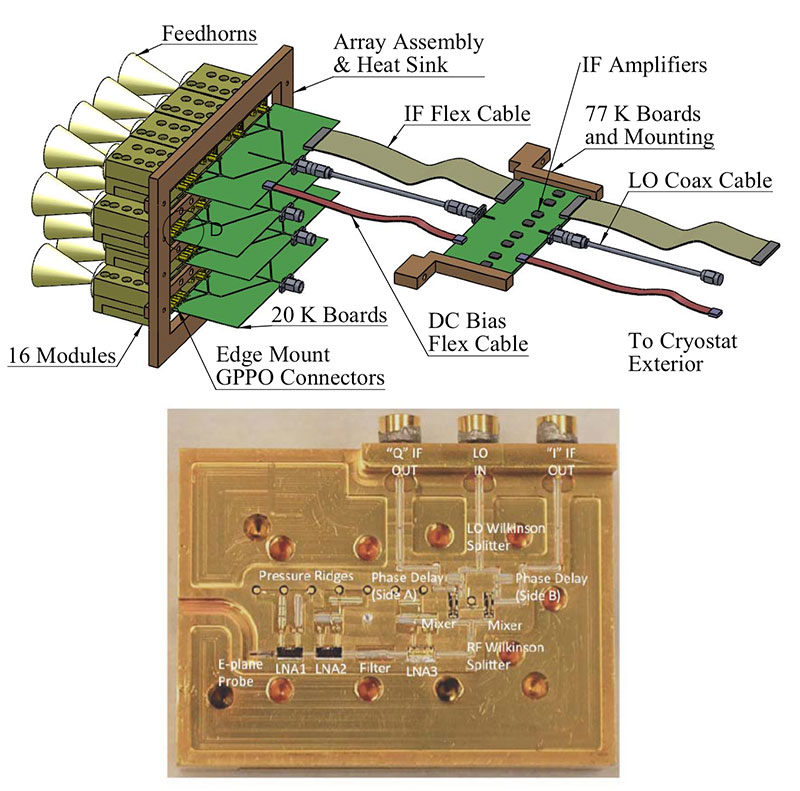
Figure 1 [Top] A concept drawing of the 16-pixel array. Mounting hardware to attach the array to the cryostat is not shown. [Bottom] The interior of a prototype receiver module showing the components and their cavities. The input RF signal is via WR10 waveguide on the left; the LO input signal and the two IF output signals from the I-Q mixer are routed through miniature GPPO connectors on top.
 Zoom
Zoom
Argus is a 16-pixel W-band focal plane array for millimeter spectroscopy that will be deployed at the Green Bank Telescope (GBT). The array operates in the 75-115.3 GHz range. The array architecture is designed as a scalable technology pathfinder for larger arrays. The array’s modular construction allows for the repair and easy replacement of malfunctioning or poorly performing elements. The Argus array fielded on the GBT will vastly improve mapping speeds and allow rapid surveys of substantial areas of the sky with high spectral resolution. Argus will address a wide-range of high-impact science: (1) star-formation and cores, (2) interstellar medium, (3) astro/bio-chemistry, (4) filamentary structure in molecular clouds, and (5) comets.
Argus uses fully integrated miniature heterodyne receiver modules based on state-of-the-art Monolithic Millimeter-wave Integrated Circuit (MMIC) technology. At each pixel, a feed couples incoming radiation to the receiver module. Figure-1 is a concept drawing of the array, and includes an image of the module. The latest state-of-the-art module tested at Caltech has a minimum receiver noise temperature of 27 K, and with less than 40 K noise in the range of 75-107 GHz. Routing of local oscillator (LO), and In-phase (I) and Quadrature (Q) intermediate frequency (IF) signals is accomplished using multilayered printed circuit boards with high-frequency laminates and flexible low-loss cables between temperature stages. GBT’s Versatile Astronomical Spectrometer (VEGAS) will be used as the backend. The projected band averaged receiver noise temperature is 50 K in the 75-115.3 GHz range.
Argus is scheduled to be deployed at the GBT by November 2014 and is a collaboration between Stanford U. (PI Sarah Church), Caltech, JPL, Univ. Maryland, Univ. Miami, and NRAO. After commissioning, the instrument is expected to be available for general use at the GBT.
Third VLA Data Reduction Workshop
Gustaaf van Moorsel

This is to remind you of the 3rd Very Large Array (VLA) Data Reduction Workshop, which will take place 8-12 April 2013 at the Pete V. Domenici Science Operations Center in Socorro, NM.
The aim of the workshop is to assist observers with the challenges posed by the increased flexibility and complexity of the VLA, in particular the wide-band WIDAR correlator modes available to the observing community since 30 September 2011. Participants will be able to reduce their own data while expert local staff is standing by for consultation. For more extensive information, please see the announcement in the November 2012 eNews.
There are still places available but registrations keep coming in at a steady rate. If you are interested in attending, please register on-line soon.
Radio Astronomy in the LSST Era Workshop Registration Open
Ken Kellermann
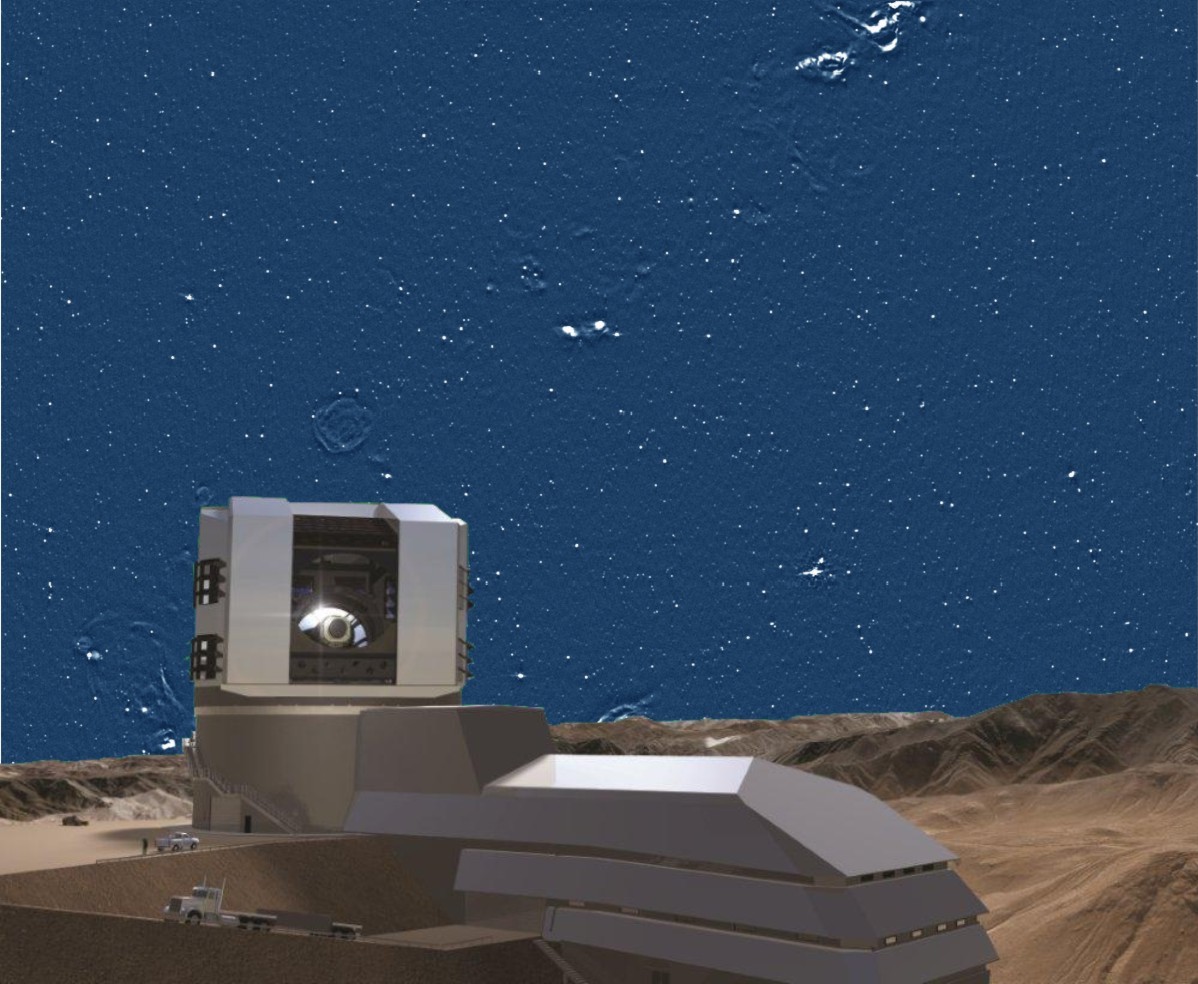
The NRAO workshop Radio Astronomy in the LSST Era will explore the landscape of radio observations in an era in which Large Synoptic Survey Telescope (LSST) is producing thousands of nightly alerts and developing a deep, multi-color view of the sky. This NRAO-LSST workshop will be held in Charlottesville, VA 6-8 May 2013 and is now open for registration. The workshop welcomes the participation of all interested scientists, including those who will not be making formal presentations.
For more information and registration, please visit the conference web site.
This Month @ the NAASC
ALMA News
Al Wootten
February 2013 marks the 30th anniversary of NRAO's involvement in the Millimeter Array project, the predecessor of ALMA in the US. In 1982, the Astronomy Advisory Committee had declined to support NRAO's 25m millimeter-wave telescope project. An NSF committee appointed to make recommendations for the future of millimeter-wavelength astronomy in the US called for the development of an interferometer with a collecting area of 1000–2000 m2 capable of working at 1 mm wavelength with 1 arcsec resolution at 115 GHz. On 10 February 1983 a group of interested radio astronomers, including representatives of NRAO, met at Bell Labs in New Jersey to consider how to move forward with this proposal. This concept became the Millimeter Array, a concept which was endorsed by the 1991 decadal committee and which eventually grew into ALMA. Design and development funding for ALMA in North America began in 1998. The ALMA Bilateral agreement was signed 25 February 2003, making this month the 10th anniversary of that milestone for the ALMA Project.
Last year, 2012, was ALMA's first year of scientific productivity, and Early Science Cycle 0 was completed on the first day of 2013. Much of the emerging Cycle 0 project science was featured during the First Year of ALMA Science conference held 12-15 December 2012 in Puerto Varas, Chile, and at the ALMA Special Session at the January 2013 American Astronomical Society meeting in Long Beach, CA. With the expiration of proprietary periods for the first datasets, these datasets are now available via the ALMA science portal, where an increasing number of science verification datasets have been available for some time. In Cycle 0, data were observed and processed on a "best efforts" basis. Even so, 96% of the 112 "Highest Priority" observing projects obtained some data.
Over the next two months, those Cycle 0 projects components – "Scheduling Blocks" or SBs – that have obtained at least half of the estimated number of executions will be calibrated and imaged and delivered to PIs. The remaining SBs – i.e. those with less than half of the estimated number of executions – will be quickly processed and delivered "as is". Since these data are probably insufficient to reach the requested science goals, it will be up to the PIs to determine how much effort they warrant. Nine projects have SBs in this category; PIs for these projects will be sent data reduction scripts and quickly-processed, calibrated and flagged data.
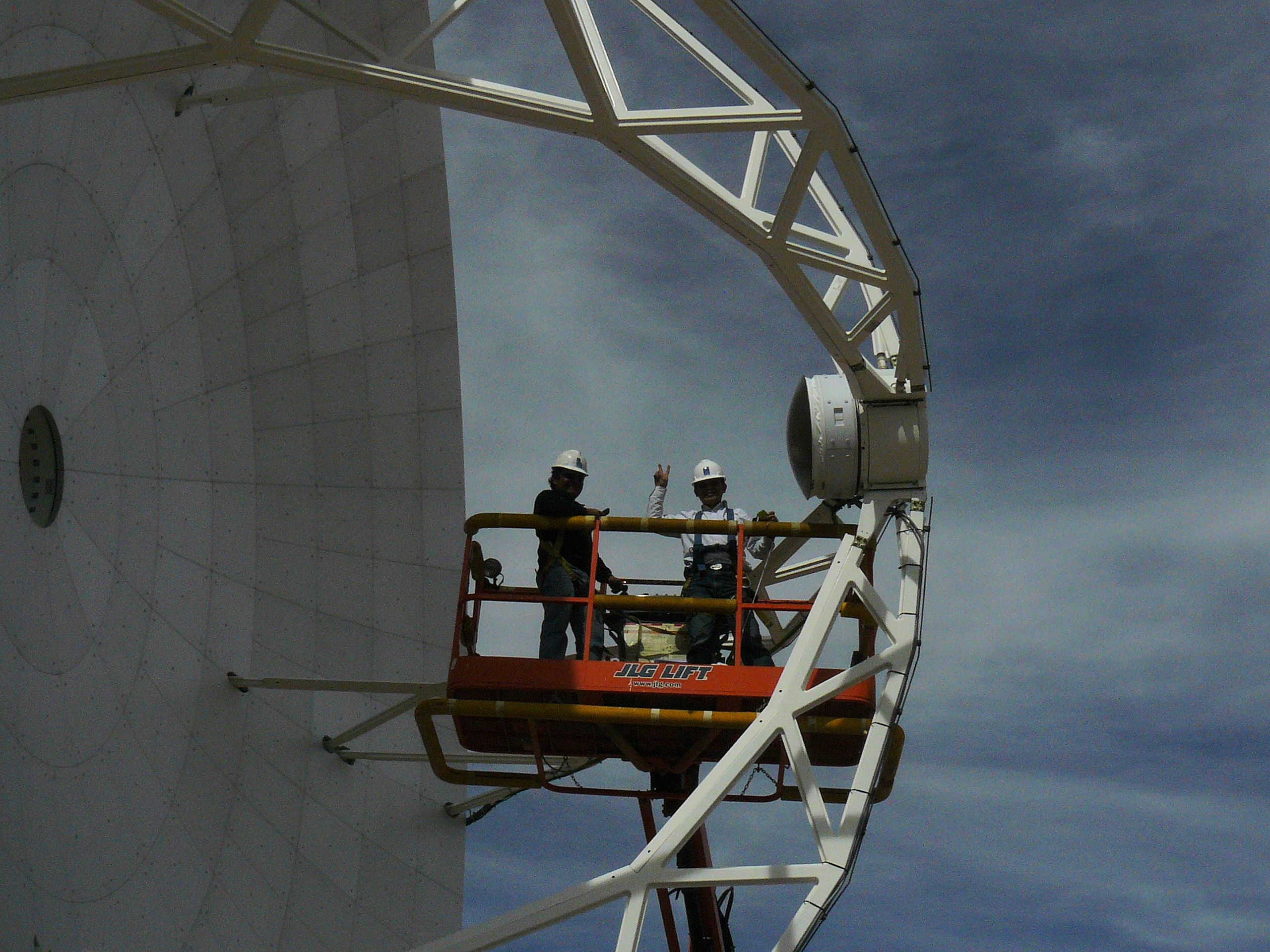
Figure1. The first delivered ALMA nutator was recently mounted on antenna DV12 at the Operations Support Facility (OSF) in Chile, initiating the nutator’s delivery to the ALMA Project. Art Symmes and John Ford led the NRAO team. Alex Jimenez from the ALMA Antenna Group is at left in this image; and Allen Wang, Engineer for CoTech/RST, the nutator supplier, is at right. The nutator integration, verification and commissioning will take place over the next several weeks, leading to its incorporation onto one of the Total Power antennas in ALMA. Photo: Art Symmes.
 Zoom
Zoom
A very successful Call for Proposals for Early Science Cycle 1 netted more than 1100 submissions, of which 197 received highest priority status. These highly ranked proposals involve 1007 of the 2835 registered ALMA users. The science program for the next observing season, Cycle1 Early Science, was announced in November 2012 and began in January 2013. The first set of projects were carefully selected from the Cycle 1 projects that were awarded "highest priority" status to represent the complete range of capabilities that were offered in the proposal call. The remaining "highest priority" projects will be prepared in several batches, as was done for Cycle 0, with the second batch prepared and approved by 1 March 2013. PIs of these projects can expect to be contacted by staff from one of the ALMA Regional Centers (ARCs) or their affiliated nodes when the project preparation (phase 2) materials for their projects are ready for review and approval. The phase2 process will closely follow that from Cycle 0.
ALMA construction was mostly completed by the close of 2012. All antennas from the North American and East Asian, and most of the European antennas, were also accepted. Front end cartridge production for the first four frequency bands was complete, and virtually all front ends containing them were complete. The 64-element correlator was delivered and accepted. At the time of writing, 52 of the final 66 antennas were stationed at the 16,500 foot elevation Array Operation Site in Chile: forty-one 12m antennas and eleven 7m antennas. Much remains to be done on the commissioning front, finishing and proving operations of ALMA's many observing modes. With major equipment and software deliveries completed, commissioning of these modes will be a focus of activity in 2013.
2013 Rocks!

The North American ALMA Science Center (NAASC), in cooperation with the Academia Sinica Institute of Astronomy and Astrophysics (ASIAA) in Taiwan, is organizing the 7th NAASC workshop titled: Transformational Science with ALMA: From Dust to Rocks to Planets - Formation and Evolution of Planetary Systems. This NAASC-ASIAA "2013 Rocks!" workshop will be held 8-12 April 2013 on the Big Island of Hawaii.
Science Program & Registration Limits
With over 200 pre-registrations and over 100 submitted abstracts, the science program is nearing completion, and the LOC is pleased to open registration to the scientific community. The list of contributed talks is now available at: http://www.cv.nrao.edu/rocks/program.html. If you requested a talk but are not on the Contributed Speaker list, the SOC would like you to present at our Poster session and reception on Thursday evening of the workshop. Posters will be up throughout the duration of the workshop but the Thursday evening reception is scheduled for designated poster viewing.
Note that registration is limited to the first 160 attendees and will close as soon as that limit is reached. Those interested in registering after we reached our limit can be put on a waiting list. Any question about contributed talks, poster presentations or to be put on our mailing list, contact the 2013 Rocks! LOC at 2013rocks@nrao.edu.
Registration Fees & Roommate Search
- Full registration is $450
- Student registration is $250.
There will also be limited student subsidies for those students sharing hotel rooms. Once registered, and student status is verified, students should email the LOC requesting a Student Subsidy Application form. The conference will support students attending the workshop by paying for their hotel stay providing: (a) students actively participate in the conference by presenting a poster or contributed talk, and (b) share a hotel room with another student.
Finally, don't forget to follow 2013 Rocks! on Facebook (https://www.facebook.com/2013Rocks). Please visit us there and "like" it to keep up to date on workshop developments. Please use this tool to connect with other participants as well and STUDENTS should use Facebook to find roommates for the conference.
Registration Link & Activities
On-line workshop registration is now open. You can also register for a luau ($110) on Wednesday, 10 April, or a Mauna Kea tour on Saturday, 13 April ($115). Space is limited on the Mauna Kea tour, and early registration is encouraged. Information on the tour and luau and other planned activities is available via the workshop web site’s Excursions page. Finally, please visit the workshop website often for all relevant meeting information. For any additional questions or concerns, please email the LOC at 2013rocks@nrao.edu. See you in Hawaii!
2013 Rocks! is committed to broadening participation by women and under-represented minorities.
ALMA Data Reduction Workshop
Alison Peck
The NRAO North American ALMA Science Center (NAASC) is pleased to offer a two-day interactive ALMA Data Reduction workshop at NRAO Headquarters in Charlottesville, Virginia, on 28 February and 1 March 2013. The aim of this workshop is to assist interested observers in learning how to reprocess their ALMA data, and to allow new and potential ALMA users to become familiar with the data format and the available data reduction and analysis tools. The program includes a combination of lectures and hands-on sessions aimed at introducing the key concepts in interferometry data reduction and demonstrating their application in the Common Astronomy Software Applications (CASA) package. Hands-on examples will focus on real ALMA data obtained during recent Science Verification observations and emphasize key steps for ALMA Early Science data reduction. To gain the most from the workshop, interested participants may wish to work through one of the older Science Verification datasets available with an online tutorial at the ALMA Science Portal.
Registration for this workshop is NOW OPEN!
There will be a total of 30 desktops for this workshop, allowing at most 30 participants, so early registration is important. The closing date for registration is Friday, 15 Feb 2013. There is no registration fee, but we will not provide remote participation, so travel to Charlottesville is necessary. Information about the logistics of travel and lodging in Charlottesville are available here.
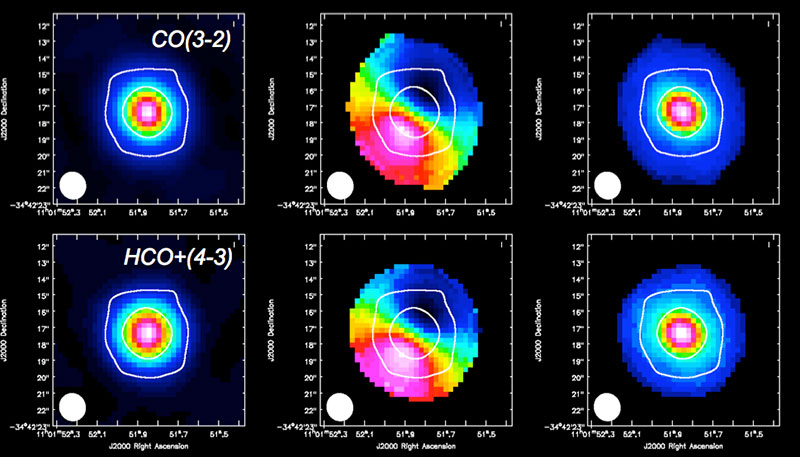
Sample ALMA Science Verification data: TW Hya at Band 7
ALMA Archive
Mark Lacy
The first ALMA Cycle 0 data completed its proprietary period in December 2012, and several datasets are now available to the public on the ALMA Science Portal. The data packages are the same as those originally delivered to the PI, and consist of a set of tar files that include the raw data (as CASA measurement sets), calibrated measurement sets, and a set of representative images in FITS format. Each data package corresponds to a related set of observations that were reduced together (usually only a part of the parent ALMA project). Over the next few weeks, we will install a searchable interface to the archive that will allow users to query for archival datasets on the basis of position, frequency and other observational parameters.
Meet the NAASC
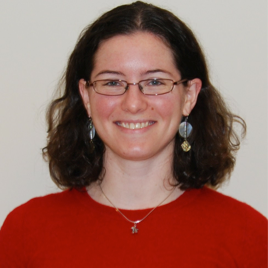
Jennifer Donovan Meyer, a new NAASC post-doc, earned her PhD in Astronomy at Columbia University with Jacqueline van Gorkom. Her dissertation focused on the evolution of early-type galaxies and the role in that process played by neutral atomic hydrogen (HI). Following her dissertation, Jen worked with Jin Koda at Stony Brook University on a survey of nearby spiral galaxies observed in CO (1-0) using combined data from the CARMA interferometer and the Nobeyama 45-meter single dish telescope. On her way to NRAO, she spent a couple months at Columbia to work on a new survey of HI-selected dwarf galaxy candidates. The common thread that ties her interests together is the understanding of the gas conditions necessary for star formation to occur in and around galaxies, from the potentially rejuvenated outskirts of early-type galaxies, to the booming centers of spiral galaxies, to tiny blue dwarf systems.
NRAO at the Long Beach – AAS
Mark Adams and Davis Murphy
Green Bank Telescope Discoveries
Jay Lockman
A new document describing some of the discoveries made by scientists using the Green Bank Telescope is now available on the NRAO science web site. The document emphasizes research that would be difficult or impossible to accomplish with any other telescope. A sample of these discoveries are briefly described below. Suggestions for further inclusions are welcome.
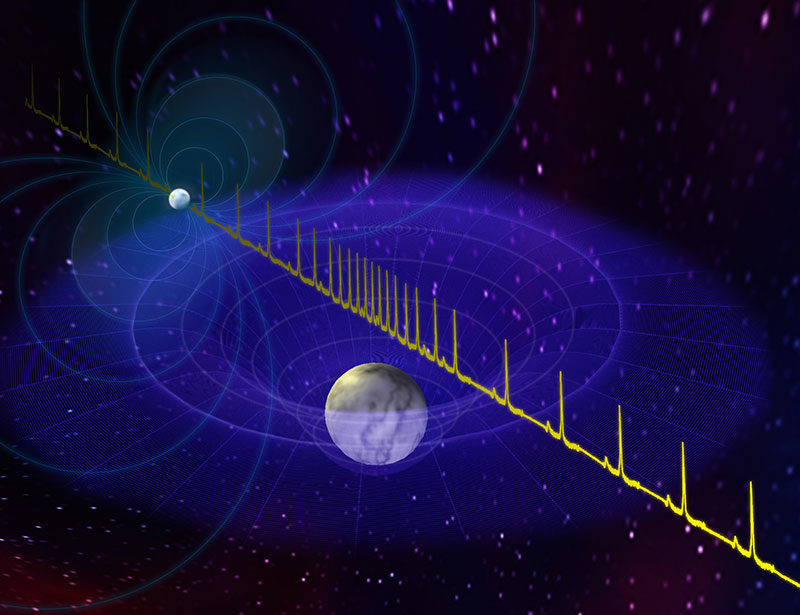
Measurement of the relativistic Shapiro Delay from a pulsar in a binary system led to the discovery of a two solar mass pulsar, the most massive ever detected, providing important constraints on our understanding of nuclear matter (Paul B. Demorest et al, 2010, Nature, 467, 1081).
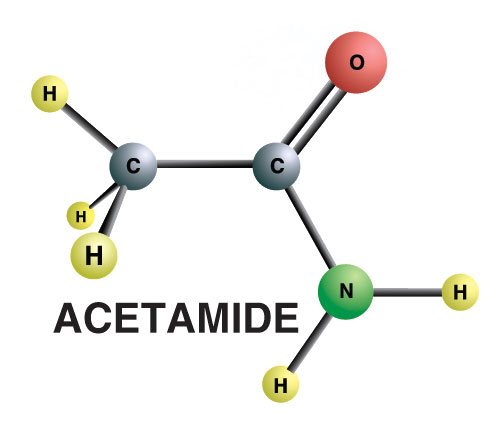
The abundance of acetamide, (CH3CONH2), the largest interstellar molecule with a peptide bond, and that of other organic molecules detected in space with the GBT, challenges our understanding of gas-phase chemistry in the interstellar medium (J.M. Hollis et al., 2006, ApJ, 643, L25).
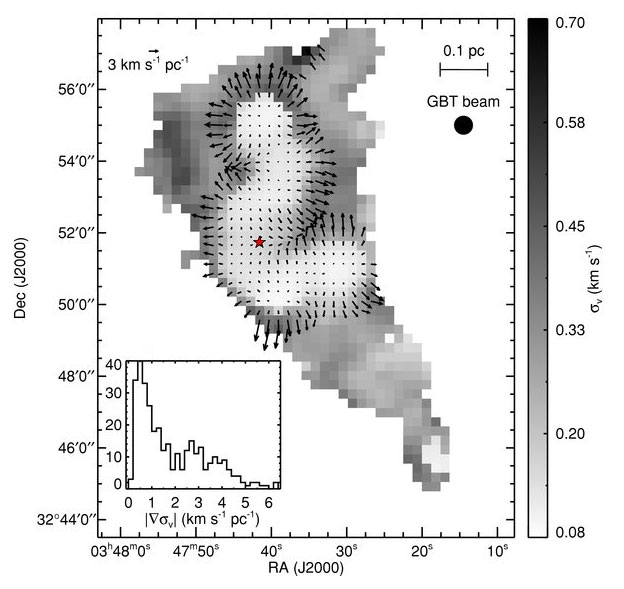
A sharp transition from turbulence to quiescence preceding collapse was detected in a molecular cloud core mapped in the NH3 line with the GBT (Jaime E. Pineda et al., 2012, ApJL, 712, 116).
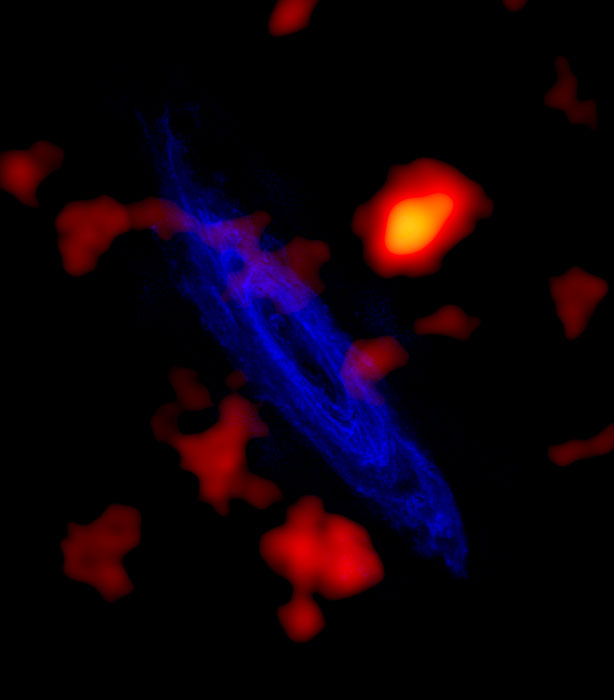
A population of faint, high velocity HI clouds was detected with the GBT (red) around the HI disk of the Andromeda galaxy, M31 (blue: data from Westerbork). This gas provides fuel for continuing star formation in M31 (David A. Thilker et al., 2004, ApJL, 601, L39).
Recent Press Releases

A Microquasar Makes a Giant Manatee Nebula
19 Jan 2013
A new view of a 20,000-year old supernova remnant demonstrates the upgraded imaging power of the National Science Foundation’s (NSF) Karl G. Jansky Very Large Array (VLA) and provides more clues to the history of this giant cloud that resembles a beloved endangered species, the Florida Manatee. Read More …

Mapping the Milky Way: Radio Telescopes Give Clues to Structure, History
09 Jan 2013
Astronomers have discovered hundreds of previously-unknown sites of massive star formation in the Milky Way, including the most distant such objects yet found in our home Galaxy. Read More …

Massive Outburst in Neighbor Galaxy Surprises Astronomers
7 Jan 2013
The surprising discovery of a massive outburst in a neighboring galaxy is giving astronomers a tantalizing look at what likely is a powerful belch by a gorging black hole at the galaxy's center. Read More …

ALMA Shows How Young Star & Planets Grow Simultaneously
2 Jan 2013
Astronomers have used the ALMA telescope to get their first glimpse of a fascinating stage of star formation in which planets forming around a young star are helping the star itself continue to grow, resolving a longstanding mystery. Read More …

Supercomputer Makes ALMA a Telescope
21 Dec 2012
One of the most powerful calculating machines known to the civilian world has been installed and tested in a remote, high-altitude site in the Andes Mountains of northern Chile. Read More …
Arecibo Observatory Call for Proposals
Fernando Camilo, (Arecibo Observatory, Director of Astronomy)
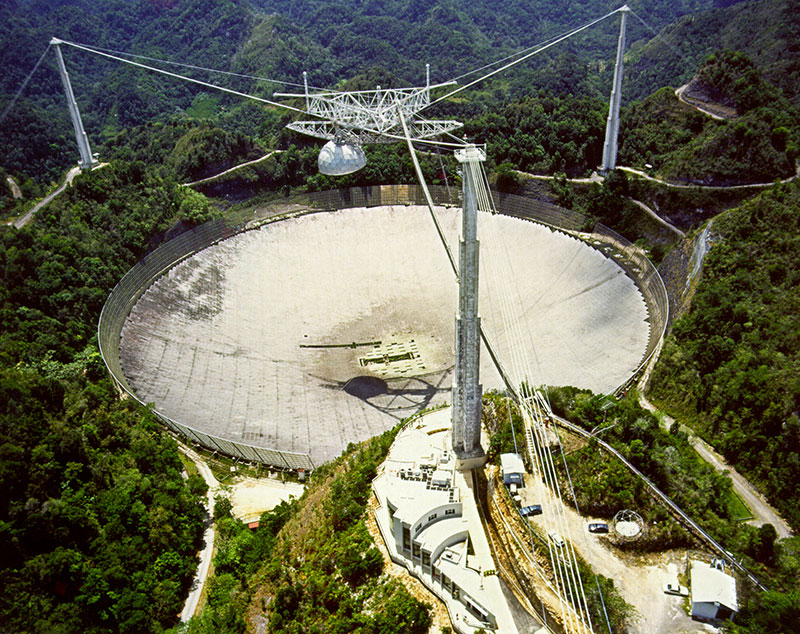
The Arecibo Observatory invites proposals for the use of the Arecibo 305-m telescope for the 1 March 2013 (17h EST) deadline. These requests should be for telescope usage within the six-month, or in some cases one-year, period beginning 1 July 2013. Details concerning this opportunity are on-line.
2013 Grote Reber Medal Awarded to James Moran
Ken Kellermann
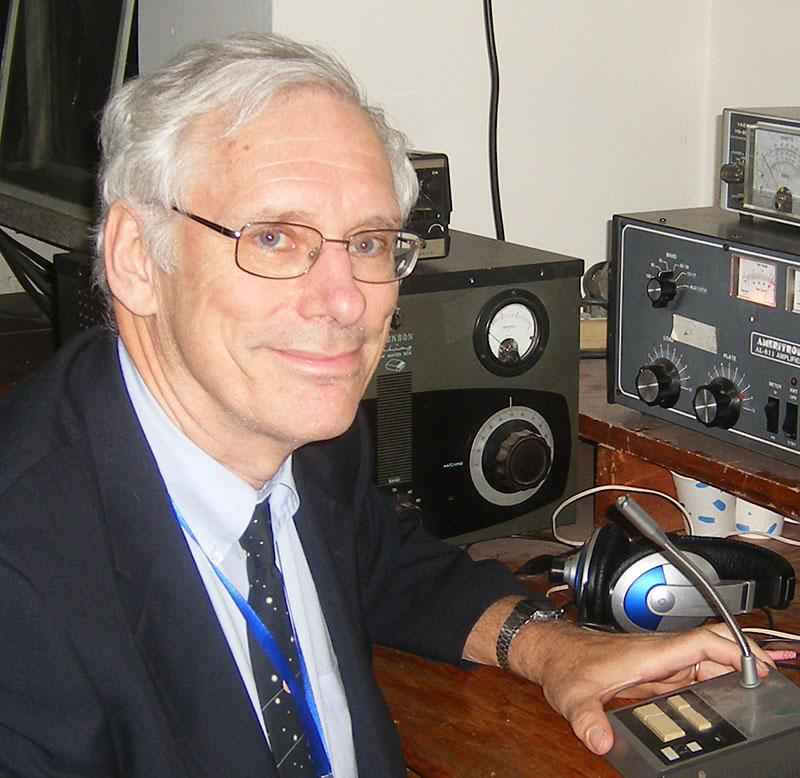
The Grote Reber Foundation has announced that Professor Jim Moran will be the recipient of the 2013 Grote Reber Gold Medal. Moran is the Donald H. Menzel Professor of Astrophysics at Harvard University and a Senior Radio Astronomer at the Smithsonian Astrophysical Observatory (SAO), where he has spent his entire career. He also holds a position as Concurrent Professor of Astronomy at Nanjing University and previously served as Chair of the Harvard Department of Astronomy and Associate Director of SAO.
Moran did his undergraduate work at the University of Notre Dame and received his PhD from MIT in 1968. He has previously received the American Astronomical Society’s Newton Lacy Pierce Prize, was the joint recipient of the 1971 Rumford Medal of the American Academy of Arts and Science, and was the 1996 NRAO Jansky Lecturer. He is a member of the US National Academy of Sciences and the American Academy of Arts and Sciences. He is a coauthor of a widely used reference book, Interferometry and Synthesis in Radio Astronomy.
Moran’s interest in radio astronomy began while he was in high school, where he used his experience as an amateur radio operator to build a small radio telescope at 400 MHz to detect the Sun. In 1962, he participated in one of the earliest NRAO summer programs, which permanently hooked him on radio astronomy as a career.
The Grote Reber Medal is awarded annually for significant and innovative contributions to radio astronomy. Moran is being recognized for his pioneering work in the development and application of spectroscopic Very Long Baseline Interferometry. For his PhD dissertation work, Moran made the first images of maser spots. Later he extended this work to use various molecular masers as tracers of the structure and magnetic fields in the envelopes of late type stars and massive protostars. He continued on to study water vapor, methanol, and silicon monoxide masers in the envelopes of both late-type stars, as well as massive protostars.
Moran also played a key role in the design and application of the NRAO Very Long Baseline Array (VLBA) for spectroscopic observations. In 1994, he led an international group of collaborators and students to use the VLBA to image the masers in the Seyfert galaxy NGC 4258, which convincingly demonstrated that the spots trace an early Keplerian accretion disk around a supermassive black hole. This work provided definitive and direct evidence for the existence of supermassive black holes and the first direct geometric distance estimate to a galaxy independent of the traditional multi-step extragalactic distance ladder.
The VLBA measurement of the distance to NGC 4258 of 7.2±0.5 Mpc was the most precise extragalactic distance measurement at that time, and has played an important role in the calibration of the Cepheid distance scale based on observations of Cepheid variables in NGC 4258. Accurate knowledge of the extragalactic distances is a key factor in establishing the equation of state of dark energy as well as being an essential prerequisite for the determination of the age, energy density, geometry, and evolution of the Universe. Moran was also the director of the Submillimeter Array (SMA) on Mauna Kea during its construction phase. Among other projects, he used the SMA to study the accretion flow in the black hole in the center of our galaxy, Sgr A*.
The 2013 Grote Reber Medal will be awarded to Moran on 8 July 2013 in Turku, Finland, during the European Week of Astronomy and Space Science.
Career Opportunities
New Postings
Hospitality Manager: The NRAO in Green Bank, WV is seeking a Hospitality Manager to manage the overall NRAO Food Service and Lodging facilities while ensuring a balance of profitability, outstanding service and staff development.
Software Engineer II: The NRAO in Socorro, NM invites applications for a Systems Software Engineer II. The successful candidate will be working as software developer in the Control and Correlator subsystems, developing new features and completing and extending the current functionalities.
STEM Education Development Officer-AUI: Associated Universities Inc. (AUI), in Washington, DC is recruiting for a STEM Education Development Officer. The incumbent will be based at the National Radio Astronomy Observatory (NRAO) in Charlottesville, VA and work closely with the NRAO Education and Public Outreach (EPO) team, under the supervision of the Assistant Director for EPO. The STEM Education Development Officer will identify and implement opportunities for AUI to contribute to the advancement of STEM (science, technology, engineering, and math) education via partnerships, grants, and the leveraging of existing NRAO and other AUI assets, which include a large staff of scientists and engineers and a talented, geographically dispersed EPO staff.
Public Education Specialist: The NRAO in Green Bank, WV is accepting applications for a Public Education Specialist. The Education Specialist leads, develops, and actively participates in the K-12 education, public outreach, and visitor center programs. In addition, the Education Specialist collaborates with the Green Bank Education Officer, the Assistant Director for Education and Public Outreach (EPO), and all EPO staff to design, fund, implement the Observatory-wide formal and informal education program.
ALMA Control System Java Developer: The NRAO in Socorro, NM is recruiting for an ALMA Control System Java Developer. The primary responsibility of this position is to maintain the high level layer of the Control subsystem, extending and improving the existing code, and debugging the problems found during operations.
From the Archives
Ellen Bouton

About this month's photo: Shing Kuo Pan (left) and Neil Horner (right) in Charlottesville's Central Development Laboratory in August 1983, testing a Superconductor-Insulator-Superconductor (SIS) millimeter-wave mixer for the Tucson 12m telescope. They are in front of the mixer test setup checking the I-V (current-voltage) curve of the SIS mixer on the oscilloscope. The square aluminum mixer test dewar is at the lower left corner. The mixer dewar is cooled by a 4K closed-cycle, JT/1020 refrigerator. On one side of the dewar, above the green tray at the lower-left corner, is the white, circular dewar vacuum window. On the other side, facing toward Pan and Horner, are three bias/monitor ports.
From the Archives is an ongoing series illustrating NRAO and US radio astronomy history via images selected from our collections of individuals' and institutional papers. If readers have images they believe would be of interest to the Archives, please contact Ellen Bouton, ebouton@nrao.edu.

